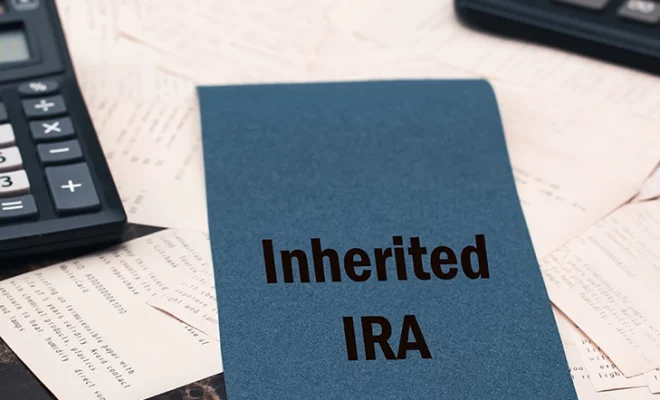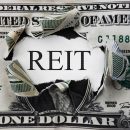How to Determine If Your Savings Can Support Your Retirement

Figuring out whether your savings are enough for retirement is not always straightforward. It is common to feel unsure, especially as you move closer to retirement. You may wonder if you are doing enough or if your current savings will last. You may also worry about making changes to your savings strategy to ensure you are on track with your goals. Working with a financial advisor can be a great step forward. It allows you to build a professional, systematic plan tailored to your lifestyle, goals, and needs. However, there is plenty you can do on your own before that.
A little self-assessment can help you gauge where you stand. This article covers a few practical steps on how to know if you are ready to retire so you can move forward with more clarity and have more productive, informed conversations when you do meet a financial advisor.
Table of Contents
Below are a few steps you can take to determine if your savings are enough for retirement:
1. Estimate your future expenses
It is important to estimate your future retirement expenses to ensure your savings are enough to cover them. While the future can be unpredictable, the five to ten years before retirement are a great time to get a realistic picture of your lifestyle costs. At that point, you likely have a clearer understanding of what it takes to maintain your current standard of living, and that can be the starting point for your retirement planning. Although retirement may come with a lot of changes that include downsizing, travel, additional healthcare needs, etc., your current expenses are still likely to offer the best insight into what you might spend later. A lot of people may use the popular guideline of the 70% to 80% or 10 to 12 times your salary rule at this time. This rule suggests that you will need about 70% to 80% or 10 to 12 times your pre-retirement income annually in retirement. While the concept is widely used and has some value, it also has some limitations. The rule assumes that you have had a steady income throughout your career, which is not always true. Most people see their earnings rise and fall over the years. You may move jobs or take sabbaticals, and your earnings may fluctuate based on commissions and bonuses.
Additionally, the rule also does not reflect your personal spending habits. Some people live on far less than they earn, while others may spend nearly everything they earn. If you save aggressively and live modestly, 70% of your income may cover your post-retirement needs comfortably. On the other hand, if most of your income goes toward your essentials, 70% might not be enough. Hence, a better approach is to understand your own numbers, which can be determined based on how much you actually spend each month and how that might change when you stop working.
It is essential to think about your future retirement goals. Consider if you will travel more or if you are likely to support your family members in retirement. You must also account for healthcare expenses that can increase over time. A retirement calculator can help you plug in your current savings, estimate investment growth, project your expenses, and calculate how long your money might last. This can give you a more accurate view tailored to your specific situation instead of following a rule that may or may not support your financial needs. You can also adjust the values on the calculator regularly as your life evolves to get more clarity.
2. Evaluate your income sources
Once you know about your retirement expenses, you need to know your income sources to understand if they are going to suffice in retirement. Understanding your retirement expenses is only one side of the equation. The next step is evaluating your income sources and creating a retirement plan around them. Your retirement income can come from several places. The most common sources include 401(k)s, Individual Retirement Accounts (IRAs), and pensions. These accounts are often easier to manage because they come with specific withdrawals or Required Minimum Distributions (RMDs), which help you guide how much you withdraw each year. They also offer tax advantages, such as tax-deferred growth or tax-free withdrawals with Roth accounts that can enhance your long-term earnings. However, these benefits also come with tax implications, so it is important to understand how these withdrawals will affect your taxable income. Consulting a financial advisor can be helpful here to determine a suitable withdrawal rate for your lifestyle.
Investment income is another source of income in retirement. This can include dividends from stocks, interest from bonds, and returns from Treasury Inflation-Protected Securities (TIPS). Unlike retirement accounts, these do not come with built-in withdrawal rules, which give you more flexibility but also require more planning. You may need to sell these assets to generate income. For this, you would need to keep an eye on market conditions and your asset allocation.
Social Security is also a stable income source. Knowing how much you are eligible to receive and when to claim your benefits can make a big difference to your overall income. Delaying Social Security can help you increase your monthly benefit, which is also useful for managing longevity risk. However, you can withdraw your benefits earlier if you depend on them. Also, it is important to consider how Social Security is taxed. Some states impose taxes on your benefits, and your federal tax liability depends on your total income from all sources. So, ensure you understand these rules or speak to a financial advisor about these laws.
Another thing to note is that Health Savings Accounts (HSAs), Medicare, and insurance policies may not provide regular income, but they are just as important in retirement. These income resources can help you cover your healthcare expenses, which often grow with age. HSAs, in particular, can be used tax-free for qualified medical expenses. Bringing all these sources together can help you build a complete picture of your future and know if your overall income can support your retirement lifestyle.
3. Account for the risk
No retirement plan is complete without accounting for risk. Emergencies, longevity, inflation, and unexpected lifestyle changes can all impact the sustainability of your savings. A realistic plan should not only cover your basic expenses but also prepare for the what ifs that often come with aging, economic changes, and factors out of your control.
Longevity is one of the biggest risks in retirement. Living longer brings in the need to stretch your savings further than you initially planned for. Delaying your Social Security benefits can be an effective strategy to overcome longevity risk. Social Security comes with a built-in longevity protection feature. For each year you delay claiming your benefits beyond your full retirement age, your monthly benefit increases, which offers you more income for the later years when your other financial resources may be lower. Annuities can also provide lifetime income and help ensure that you do not outlive your savings. These can be especially helpful if you do not have a pension or want to cover essential expenses with a guaranteed income.
Inflation is another concern that most retirees face. Over time, the purchasing power of your money will lower, and factoring this into your budget is essential. Social Security can help you with this to some extent, as it includes cost-of-living adjustments. However, relying solely on it may not be wise. Treasury Inflation-Protected Securities (TIPS) are another tool that you can consider to beat inflation. These government bonds are designed to keep pace with inflation. Additionally, a well-diversified investment portfolio, with a mix of stocks and bonds, can also help grow your savings over time and beat inflation in the long run.
You must also understand that your spending habits will also evolve with age, and not all your expenses will be impacted by inflation. While healthcare costs tend to rise in later years, many other expenses you presently incur will decline. Travel, dining out, or similar hobbies may naturally taper off as you age. After age 85, for instance, it is common to see a drop in discretionary spending. Make sure to incorporate such changes in your retirement plan to create a more balanced income stream.
Lastly, you also need to account for emergencies. These can be medical, family-related, or home-related. Having a cash reserve or liquid assets available for such situations can help you overcome these financial blows. Emergency reserves can also help you prevent the need to tap into your long-term investments.
4. Check your current savings
Now that you have a realistic picture of what you need to do for the future, you need to check where you stand today. Checking your current savings can give you a clear idea of whether you are on track, need to adjust your plan, or have more flexibility than you expect to have. A retirement calculator can help you estimate whether your savings will be enough to meet your goals. If there is a shortfall in where you are now and where you need to be, the number of years left until retirement will determine the best approach to bridge this gap. By using a retirement calculator, you can identify opportunities to increase your contributions to retirement accounts, like the 401(k), IRA, etc. You can also consider reducing your discretionary expenses or exploring investments with higher growth potential. For instance, if your investment portfolio is concentrated on bonds, your returns may not be in line with your expectations. Shifting to stocks in such a scenario can help you make up for the gap. A financial advisor can help you determine the best strategy based on your specific situation and risk appetite. Age and retirement timeline play a crucial role in this assessment. If you have 20 years left to save, you have more flexibility to make adjustments. However, if you are closer to retirement, you may need to focus on low-risk options and not compromise your financial stability with high-risk options at this point.
If your savings are on track, you can continue maintaining the same retirement planning strategy. However, it is important to stay consistent with your contributions and investment choices to ensure financial stability. Knowing you are doing well, you must not become complacent, as this can backfire if you are not careful.
If you have saved more than expected, the extra cushion can provide you with added financial security for unexpected expenses and emergencies. However, you must assess if such aggressive saving is negatively impacting your current lifestyle. If you are living below your means now in the hope of a better tomorrow, you may consider adjusting your contributions slightly to allow for a better balance between present and future security.
In each scenario, reviewing your retirement plan with a financial advisor can provide you with more clarity on the best course of action. A professional can help you evaluate if you need to make adjustments or not.
5. Speak to a financial advisor about all the above steps
A financial advisor can help you with each of the above steps and ensure you make the right decisions through them all. They can teach you how to calculate your future retirement expenses and plan better. An advisor can provide clarity on how much you will need to maintain your lifestyle and offer strategies to cover any shortfalls along the way. They can also help you avoid common mistakes that could impact your long-term financial security.
An expert reviewing your retirement strategy can ensure that your investment portfolio is balanced. They can help determine if you need to make any changes to your plan, especially as you get closer to retirement. They can help optimize your Social Security benefits, manage your withdrawal rates, and help with tax planning.
To conclude
The above steps can help you know if you are ready to retire and make the right call as you approach your golden years. Reviewing these factors a few years before retirement or even earlier can help you ensure that you are financially prepared. Understanding where you stand can give you greater control over your future and help you take timely action when things go wrong.
Use the free advisor match tool to get matched with experienced financial advisors who can help you prepare for your golden years. Answer some simple questions about your financial needs and get matched with 2 to 3 advisors who can best fulfill your financial requirements.
For additional information on retirement planning strategies that can be tailored to your specific financial needs and goals, visit Dash Investments or email me directly at dash@dashinvestments.com.
About Dash Investments
Dash Investments is privately owned by Jonathan Dash and is an independent investment advisory firm, managing private client accounts for individuals and families across America. As a Registered Investment Advisor (RIA) firm with the SEC, they are fiduciaries who put clients’ interests ahead of everything else.
Dash Investments offers a full range of investment advisory and financial services, which are tailored to each client’s unique needs providing institutional-caliber money management services that are based upon a solid, proven research approach. Additionally, each client receives comprehensive financial planning to ensure they are moving toward their financial goals.
CEO & Chief Investment Officer Jonathan Dash has been profiled by The Wall Street Journal, Barron’s, and CNBC as a leader in the investment industry with a track record of creating value for his firm’s clients.

















